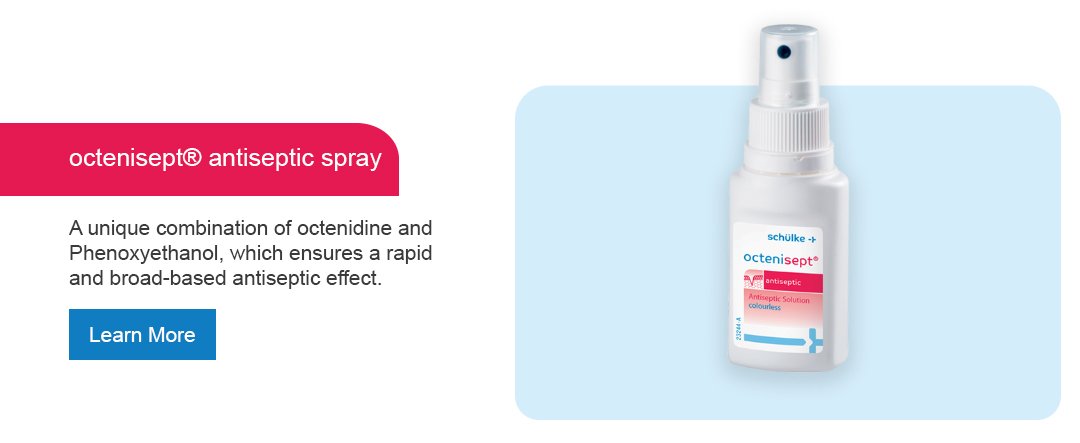Comprehensive wound care involves several steps. Initially, it’s crucial to determine if the wound can be managed at home or if medical attention is necessary. The wound should then be cleaned and cared for to promote optimal healing. Below are the essential elements of wound care.
Essential First Aid Steps
Minor injuries such as a cut finger, scraped knee, or a scratch on the arm can often be treated at home. Here’s how to provide proper wound care:
- Cleaning: If the wound is bleeding, allow it to bleed for a short period for self-cleaning. Afterward, remove large debris like glass or grit with sterilized tweezers. Use a wound disinfectant to cleanse the wound from germs and small impurities.
- Disinfection: Use a mild, non-stinging wound disinfectant spray to kill potential germs, protecting against wound infections.
- Dressing: Cover smaller wounds with a band-aid, while larger ones require a compress bandaged lightly to control bleeding and facilitate healing.
Keep a first-aid kit at home with bandages, sterile compresses, band-aids of various sizes, wound disinfectant, and wound gel.
Wound Care for Different Wound Types
Wound care may vary depending on the wound or injury type.
Lacerations: Lacerations often result from falls. Though mostly superficial, their edges can be jagged, complicating healing. After cleaning and disinfecting the wound, a pressure bandage may be necessary to control bleeding. The wound’s edges can be approximated for minor injuries using adhesive bandages. However, more extensive and heavily bleeding wounds necessitate medical attention.
Risk of Tetanus: Always consider getting a tetanus shot in case of injuries. Tetanus bacteria can cause a severe, potentially fatal infection if left untreated. If your last tetanus shot was a while ago, consult a doctor for a vaccination.
Abrasions and Cuts: Clean and dress abrasions and cuts appropriately. If the injury is superficial, you can manage it yourself.
Burns: Burns are common in daily life. Cool the affected areas first and cover them if needed. Moisturizing lotions and cooling gels can help relieve pain and aid wound healing.
Animal Bites: Be cautious with bites from dogs or cats as their saliva often harbours numerous germs, raising the risk of wound inflammation. In such cases, seek medical attention promptly.
When to Seek Medical Help for Wound Care
It’s unclear whether a wound can be managed at home or needs professional medical care. When in doubt, seeking medical help earlier rather than later is better. Consult a doctor if:
- The bleeding can’t be controlled
- The wound edges are gaping or tattered
- The wound is deep
- There’s severe, throbbing pain
- Swelling or redness develops around the wound
- There’s a sensation of heat at the wound site
Visit a doctor immediately for extensive and deep injuries, burns, animal bites, or heavily contaminated wounds. The doctor may anaesthetize the area and suture or staple it, reducing the potential for scarring.

Moist or Dry Wound Care?
Traditionally, it was believed that wounds needed air and light for effective healing. However, recent studies suggest wounds heal better in a moist environment as it prevents crust formation that can rupture and impede healing. Special bandages and wound gels can facilitate moist wound healing.
What are Primary and Secondary Wound Care?
Primary wound care refers to cases where the wound can be easily closed, such as with a band-aid or sutures. Secondary wound care applies when primary wound closure isn’t possible due to inflammation or chronicity. In these cases, the wound remains open for regular cleaning until it’s sufficiently healed for closure.
Chronic Wound Care
Chronic wounds, which don’t heal for weeks, often occur in bedridden people or diabetic patients. Bacterial colonization of these wounds often impedes healing. Treatment of chronic wounds involves regular wound cleaning with special antiseptic solutions and potentially debridement, where the doctor removes tissue from the wound edges and depths to stimulate healing. Once infection-free and healthy tissue is forming, the wound is closed.
Follow-up Care in Wound Care
Successful initial treatment is a crucial step, but you should also pay attention to follow-up care to ensure complication-free healing:
Dressing Change: Replace the band-aid or compress after a few days.
Skin Care: Regular application of lotion enhances skin suppleness and promotes regeneration. Special healing ointments can be used for the skin around the wound.
Keep Clean: Protect the wound from contaminants and soaps. Use a waterproof wound dressing while showering.
Monitor: If the wound becomes warm, red, suppurative, or doesn’t show noticeable healing progress after a few days, consult a doctor to prevent wound infection.
By following these tips, you can minimize the risk of complications and support ideal healing.





